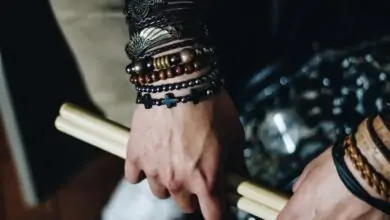How To Attach Flatbacks

Flatbacks are versatile decorative elements commonly used in various crafts and jewellery making. They can breathe life into an item and transform its appearance. Whether you’re embellishing garments, accessories, or DIY projects, flatbacks can add a touch of style and elegance.
Attaching flatbacks may seem daunting for beginners, but it can be straightforward with the proper techniques and tools. This article will guide you through attaching flatbacks, offering tips and tricks to ensure a secure and professional-looking result.
Tools and Materials Needed to Attach Flatbacks
Before diving into the attachment process, gathering the necessary tools and materials is essential. Every material is crucial. This is a checklist of everything you’ll need:
- Flatbacks: These come in various shapes, sizes, and materials, such as perfect Swarovski flatback crystals, gemstones, or metal accents.
- Adhesive: Choose a glue suitable for the materials you are working with. Jewellery glue or epoxy is often recommended.
- Tweezers: Use tweezers with a fine tip for precise placement of flatbacks.
- Toothpick or wax pencil: These tools help pick up small flatbacks and apply glue precisely.
- Craft mat or tray: Protect your work surface and organise your materials.
- Cotton swabs or Q-tips: Use these for applying and removing excess glue.
- Masking tape: This can hold flatbacks in place while the glue dries.
- Safety glasses: Protect your eyes when working with adhesives.
Step-by-Step Guide to Attach Flatbacks
Now, it’s time to learn how to attach Flatbacks. Adding flatbacks to any item is a gradual process to achieve satisfactory results. These steps include;
1. Prepare your work area: Clean the surface where you plan to attach the flatbacks. Ensure it is free from dust, oils, and debris affecting the adhesive’s bonding. Only apply glue to a clean, dry surface.
2. Select the suitable adhesive: Consider the material of your flatbacks and the surface you’re attaching them to. Certain adhesives do not bond firmly with plastic or glass. Epoxy or jewellery glue is generally reliable for most applications. Please read the manufacturer’s instructions for the adhesive and follow them carefully.
3. Practice placement: Before applying adhesive, experiment with the order of the flatbacks. This technique would help you limit mistakes to the barest minimum. Arrange them on your project to find the desired design. This arrangement is similar to a preview of the final design. Take a photo or mark the positions to refer to later.
4. Apply the adhesive: Following the adhesive manufacturer’s instructions, apply a small amount of glue to the back of the flatback using a toothpick or wax pencil. Be mindful of using the right amount; too little might not secure it properly, while too much could cause messy overflow. Also, too little adhesive may affect the durability of your flatback design, while too much glue may mess up the project surface.
5. Position the flatback: Use tweezers to place the flatback onto the desired spot. Gently press down, ensuring good contact with the surface. Adjust its position if needed, as some adhesives have a short repositioning window. Take care not to mess up the work surface when placing the flatback.
6. Secure with masking tape: Use small masking tape to hold the flatback in place while the glue dries. This can be particularly useful when working with vertical or curved surfaces.
7. Remove excess glue: Wipe any excess glue using a cotton swab or Q-tip before drying. Be cautious not to disturb the flatback’s position while doing this.
8. Allow proper curing time: Different adhesives have varying curing times. Follow the manufacturer’s instructions to ensure the adhesive fully sets. Avoid moving or handling the project until the glue has cured completely.
9. Clean up: If you accidentally get glue on other surfaces, promptly remove it using appropriate solvents or follow the adhesive manufacturer’s recommendations for cleanup. Adhesive removal is straightforward when you follow the proper instructions.
Additional Tips for Adding Flatbacks
Run into any problems while attaching your flatbacks? The following tips might help you;
- Consider the size and weight of the flatbacks. Larger or heavier ones might require additional adhesive or support.
- Experiment with different placement options to achieve the desired design.
- Work in a well-ventilated area and follow safety precautions when using adhesives.
- Avoid touching the adhesive with your fingers, as it may reduce effectiveness.
- If the flatback doesn’t stick properly, check if the surface is clean and consider applying more adhesive or using a stronger one.
- Practice on scrap materials before attaching flatbacks to your final project.
Conclusion
Attaching flatbacks can be an enjoyable and rewarding process that enhances creative projects. With the right tools, materials, and techniques, you can achieve professional-looking results that add a touch of elegance and style to your crafts, garments, or jewellery. Experiment, practice, and let your creativity shine!




